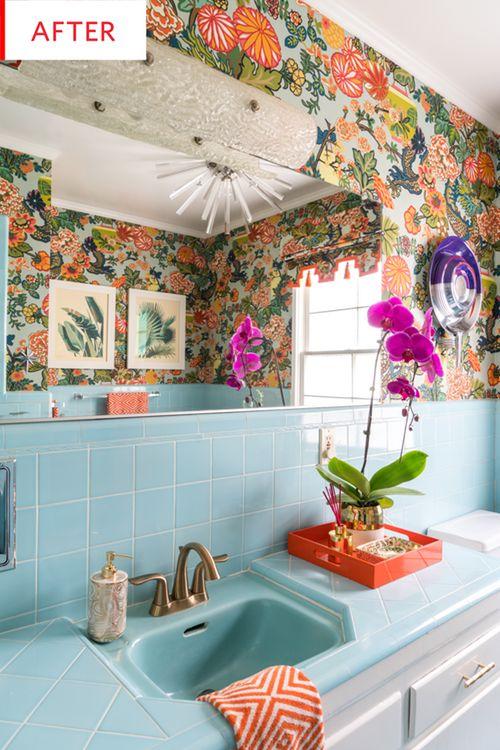Vintage View: We take a look at nostalgic bathroom design
Many of our bathrooms are still saturated in the style of the decades from which the modern domestic bathroom first appeared — the Edwardian era and specifically the visual excitement of the later jazz age. In a country manor or terraced two up, two down, until a room dedicated to indoor plumbing arrived washing was scattered all over the house. Tin tubs by the fireside, basins and ewers upstairs, and a toilet often at the bottom of the garden. Tough going.
Cool, clean, elegant — many decorous late 19th-century and art deco forms in suites, lighting and surfacing that wowed our great, great elders, have persisted to the present day. Putting together a period informed bathroom? The materials are all there on the showroom floor. The look reaches back and forth between late Victorian elegance of the 1890s right through to the brutalist minimalism of the 1950s and 1980s sexy swish. Modern performance can be neatly dressed in old fashioned elegance, but spice it with 21st-century decorating daring to bring it all home.
Truly, vintage sanitary ware should be functional and in pristine condition, with period wastes and traps married to standard pipe-work by your plumber. Chips, cracks and crazing — it’s a thin line between faded gentility and a shudder. The water-colour light of a period house with rippling plaster and toffee dark antique floor-boards is far more forgiving of shabby chic than the over-head spots of a renovation or new build. Consider balancing restrained, elegant contemporary bathroom fittings against the proportions and atmospheric magic of a period bathroom space — often a fantastic success and far less Hyacinth Bucket.
Indicating art deco? An angular traditional, sculpted sink on a fluted pedestal or wall hung with the pipe-work exposed below — you’re halfway there. Square and rectangular basins, chrome fittings and an integrated up-stand to catch soapy splashes — the lines of these sinks have changed little. Chrome sink stands fastened to the floor with hanging points for towels introduce a touch of the 20s, with hints of gentle industrialism. If you like laid back wartime nostalgia — use the sink frame to hang a pretty (washable) fabric curtain. Globes and other Odeon forms of diffusing pressed glass, wall lamps and up-lighters are super glamorous for the flapper girl’s en-suite.
The monochrome bathroom remains extremely popular in AW 2020, and art deco was always flush with black and white, heavily influencing the 1970s and 1980s search for luxury. To amplify space and send light flying, add an outrageous over-sized mirror. Fans, shells and triptych (popular for dressing-tables — look for survivors), all slide that trombone. The back-lit LED mirror of today speaks to neon lighting memories. My choice would be a recessed plate mirror belted along the longest wall.

Standard mixer and mono-bloc taps? For a turn of the century of art deco room, separate, three-hole/two-tap/one spout with cross-heads or paddle-style levers have a more authentic look. If you prefer a modern toilet — just keep the form squared off at the bowl and sink the cistern into the wall. If you do want a high cistern go really high with ornate support brackets, a long chain and a ceramic pull. To add a striking update — look into super-sized, sumptuously coloured eclectic floral print wallpaper or a digital print mural. Concrete screed and large format tiling can support a vintage suite perfectly. Honest stone glazes, aggregates, slate, marbles, clay and flag — all flooring in our visual old-world lexicon.
Roll tops baths were once the go-to for period pleasures. The flare of a roll-top takes up precious centimetres and looks best centre stage. Don’t leap to even a short slipper bath unless you have oceans of room. A typical 1990s roll-top with a cheap cradle shower is dated in all the wrong ways against a straight-sided floor standing bath skirted to the floor. Dark walls, big white free-standing bath — antique-inspired rooms are throwing new shades. Avoid a dull 1990s vanilla spa staging.
Make your vintage statement with one of the killer taps and/or shower heads in antique shapes in brushed metals or even black. Brassware is a staple now — the refinement of a red metal without the garishness of gold. Floor-standing pipes and taps will leave the line of your new vessel intact. One of the biggest complaints about traditional bathrooms is visual fussiness — lose the rope edges and scallop soap dishes. It’s a nod not a full-on diorama. Real rooms are accrued over time and mix up pieces from different decades with similar lines.
What about a freestanding shower? The metal pole frame, inspired by bathhouses and big house showers of the early 20th century, has taken to new range showers too — expensive but amazing — look up the work of Drummond (England) who deliver nothing short of a four-poster showerexperience.
If you like the 1970s dial-up groovy sophistication with the tiling, lighting and smoked mirrors of a boutique hotel in Berlin or Manhattan. Black is back in basins and brass-ware — but weigh up the appeal of anything fashionable and trending when you’re cementing it into place.
Geometric tiling with metallic inclusions here and there, or one colour or finish graded into another — very fresh and interesting. Park up a huge cheese plant (Monstera deliciosa).
Architectural prongs and bent-pipe style taps first seen in the 1960s in various matt metals are trending everywhere. Try taking the taps up onto the wall — it allows for a narrower basin — very sleek, very chic even in an Edwardian suite. Try pastel colours, honed metals, powder coated coloured taps, timber notes and comforting linen choices.
Terrazzo and round “penny” tiles remain key flooring for this year and next and will suit a vintage bathroom of any decade. Can’t manage a poured floor or bespoke installation? There are plenty of tiling choices to step it out.








